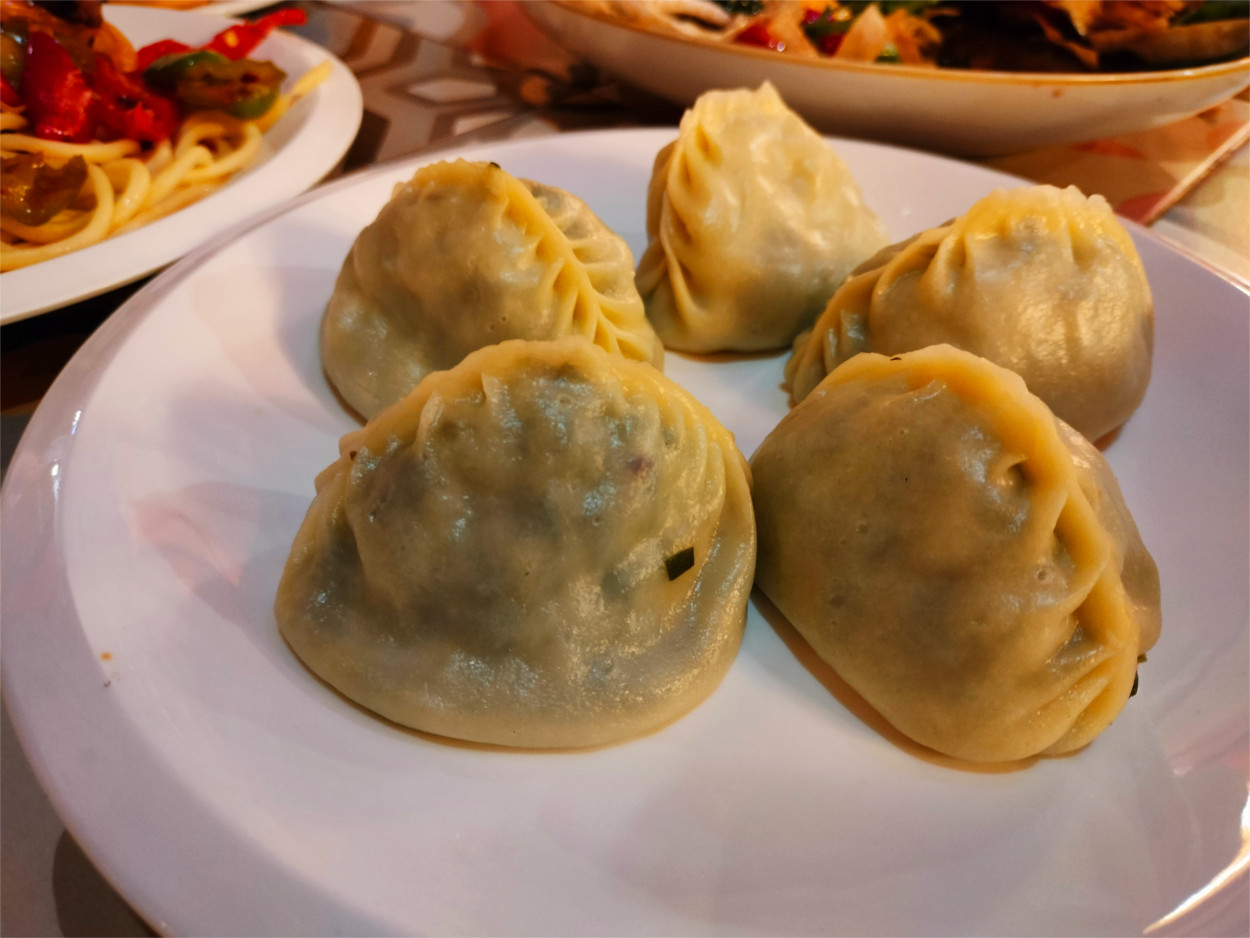Our very first meal in Kazakhstan was a well-considered introduction to modern day Kazakh food. The Family had pinged her network and come back with an introduction to a person who became our go-to consultant on Kazakhi affairs. This trust started with our first meal where we left the ordering to her. Instead of asking for a beshbarmak, which would have been a meal in itself, she ordered a variety of smaller plates. It was a great way to introduce newcomers to a range of local foods. When we met some of these things later in less ideal circumstances, we knew what to do.
The most familiar of these was the manti, a steamed meat-filled dumpling, which is shown in the featured photo. Variants will be familiar from China in the east to Finland in the north and Tibet to the south. For fifty centuries or more, Central Asia has been the exchange center of world culture. So it is hard to trace of the origin of manti.

The same could be said of the other snack which accompanied our meal: the baursak. This is a fried ball of dough, which from its fluffiness could have yeast or eggs (or both). It brought back half-forgotten memories of a snack that my mother had learnt the recipe for when I was in junior school. She made it from cake batter, so it had egg, yeast, sugar and salt. This fried snack is not the healthiest of eats, but it is comfort food. Something like this can be found in Turkey and the middle east, the Konkan coast, and perhaps many other parts of the world. Where did it come from? Central Asian food, like many other of its customs, evokes a strange familiarity.
